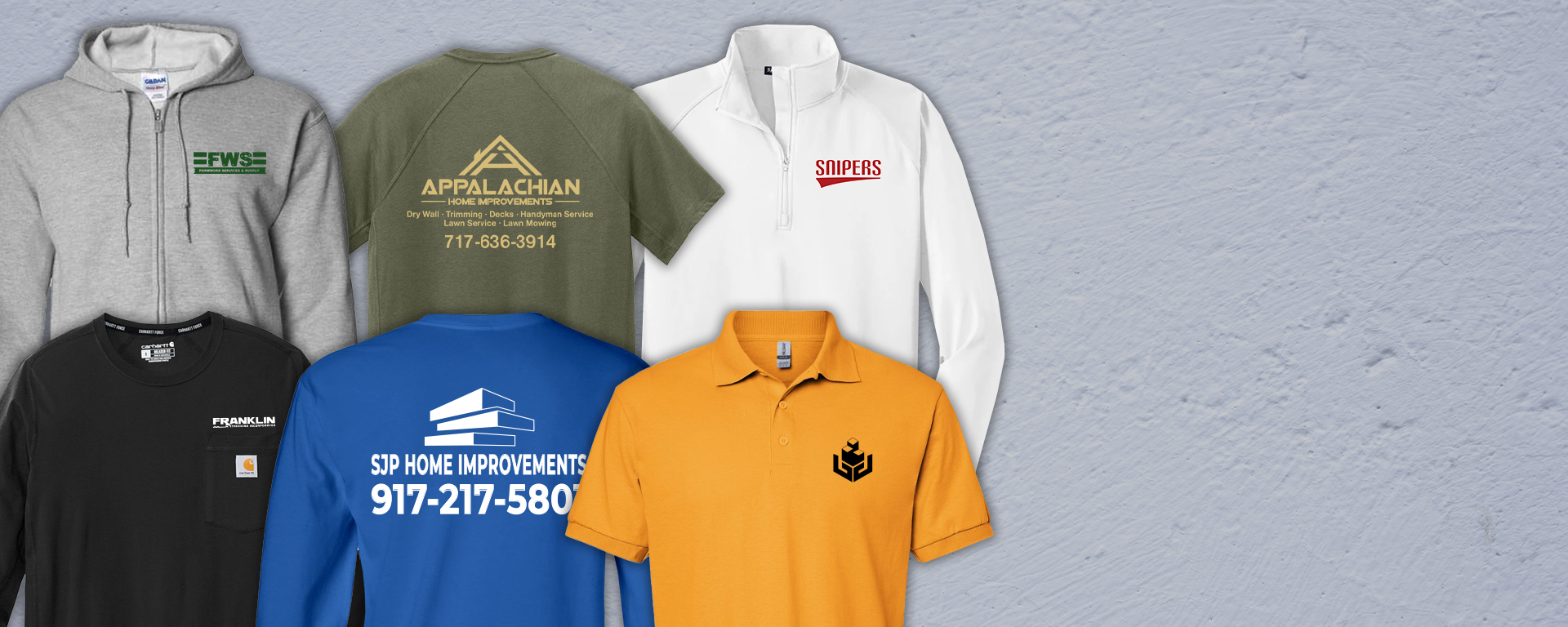Comprehending Clothing: The Relevance of Fabric Options in Your Wardrobe
The choice of textile in clothing plays an essential role in both aesthetic appeals and functionality. Different products supply differing degrees of longevity, convenience, and breathability, straight influencing the user's experience. Understanding these subtleties can boost one's closet markedly. Many overlook just how these choices can influence not just individual design, but also sustainability. What material choices could redefine your wardrobe and align it with both design and duty?
The Role of Fabric in vogue and Performance

Usual Material Types and Their Qualities
When picking apparel, understanding the features of common material types is important for making educated selections. Cotton, a widely-used all-natural fiber, is understood for its soft qualities, adaptability, and breathability, making it appropriate for casual wear and day-to-day garments. Linen, another all-natural choice, flaunts outstanding moisture-wicking homes and a distinctive structure, suitable for cozy climates.Wool, often preferred for its warmth and longevity, differs in excellence; merino wool is soft versus the skin, while coarser types are made use of for outerwear. Artificial fabrics like polyester and nylon supply longevity and resistance to wrinkles, making them preferred for activewear and traveling garments. Ultimately, blends, which incorporate synthetic and all-natural fibers, can enhance functionality while preserving convenience. By identifying these textile characteristics, people can pick apparel that aligns with their way of living and visual preferences.
Breathability and Convenience: Selecting the Right Fabrics for Different Climates
Choosing the right textiles for different climates can greatly boost comfort and general wearability. Breathable materials are vital in warm environments, as they permit air circulation and moisture evaporation. Fabrics such as cotton, bed linen, and moisture-wicking synthetics properly attract sweat far from the body, keeping the user cool and dry. On the other hand, in chillier environments, thicker textiles like wool or fleece supply insulation while keeping breathability, ensuring heat without overheating.Additionally, the option of material weight plays an important function; lightweight textiles are preferable for summer, whereas heavier choices are suited for winter wear. Understanding the special homes of each material enables individuals to dress suitably for differing weather conditions. Eventually, picking breathable and comfortable textiles customized to details climates can greatly boost daily comfort and enhance the total experience of wearing clothes.
Longevity and Care: Just How Material Influences Longevity of Your Wardrobe
Selecting the ideal materials can considerably influence the resilience and treatment requirements of a closet. Fabrics such as cotton and polyester are known for their strength and simplicity of maintenance, making them optimal for everyday wear. In comparison, delicate products like silk and lace call for even more careful handling and specialized cleaning methods, which can boost the time and effort needed for care. Branded Clothing.Durability is also influenced by the textile's weave and coating; firmly woven textiles tend to stand up to wear and tear far better than loosely woven alternatives. Additionally, artificial blends typically give enhanced toughness, combining the very best high qualities of numerous fibers.Understanding the care guidelines for each and every material is important, as improper drying out or cleaning can result in premature wear. Ultimately, choosing durable products can cause a longer-lasting wardrobe, reducing the regularity of substitutes and contributing to a more lasting style selection
The Influence of Material on Fit and Silhouette

Sustainable Textile Selections: Making Eco-Friendly Decisions
The impact of fabric prolongs past fit and silhouette to incorporate environmental aspects, prompting a growing rate of interest in check my reference lasting material choices. Green materials, such as natural cotton, hemp, and Tencel, are gaining grip among customers who focus on sustainability in their wardrobes. These products are commonly created with less chemicals and water, minimizing their eco-friendly footprint.Additionally, recycled fabrics, made from post-consumer waste, offer an ingenious option to the textile market's pollution issue. Brands increasingly welcome openness in their sourcing approaches, enabling consumers to make enlightened choices concerning their purchases.Choosing lasting materials not just sustains ethical techniques however also motivates the fashion business to take on more liable manufacturing techniques. As awareness of environmental issues increases, people are advised to assess the long-lasting influence of their textile choices, cultivating an activity in the direction of a more lasting and environmentally conscious approach to style.
Boosting Design: Just How Fabric Can Change a Clothing
While numerous might concentrate on shade why not check here and cut when selecting an outfit, the choice of textile plays an important function in elevating style and improving overall appearance. Different materials share distinctive moods and messages; for instance, silk emanates deluxe and sophistication, while jeans offers a laid-back, unwinded ambiance. The appearance and drape of a material can considerably modify the silhouette, with organized fabrics supplying a refined look and softer ones producing a much more fluid, loosened up aesthetic.Moreover, the weight of the material affects wearability throughout periods. Light-weight textiles like linen and cotton are ideal for summertime, while larger products such as woollen and velvet offer warmth and beauty in chillier months. Comprehending fabric residential properties, such as breathability and stretch, likewise equips people to make informed choices that enhance convenience without endangering style. Ultimately, the right material can change an attire from ordinary to amazing, making discover this it a crucial factor to consider in any kind of wardrobe.
Regularly Asked Concerns
Just how Do I Identify the Textile Web Content of My Apparel?
To identify fabric content, one can analyze treatment tags, conduct melt examinations for fiber recognition, or speak with material swatches. These methods assist separate products, making certain informed options for clothes care and upkeep in daily wear.
Can Textile Choice Affect My Mood or Self-confidence?
Textile selection can greatly affect a person's mood and confidence. Branded Clothing. Particular materials may stimulate feelings of comfort or elegance, while others can really feel restrictive or uncomplimentary, eventually influencing self-perception and emotional well-being throughout the day
What Fabrics Are Ideal for Sensitive Skin?
For individuals with sensitive skin, natural fabrics like bed linen, bamboo, and cotton are usually recommended. These materials are breathable, hypoallergenic, and less most likely to create irritability, making them suitable choices for convenience and skin health and wellness.
How Do I Properly Laundry and Look After Various Fabrics?
To properly clean and care for various materials, one should consider each material's certain requirements, including temperature level setups, cleaning agents, and drying methods, ensuring longevity and keeping the material's original qualities for excellent use.
Are There Certain Fabrics for Athletic or Performance Put On?
Sports or performance wear often makes use of materials such as spandex, nylon, and polyester. These products are developed for moisture-wicking, breathability, and flexibility, enhancing activity and comfort throughout exercises while supplying toughness and support. Alternatively, in colder environments, thicker materials like wool or fleece offer insulation while retaining breathability, making sure warmth without overheating.Additionally, the choice of textile weight plays an essential function; light-weight textiles are better for summer season, whereas larger alternatives are fit for winter wear. In contrast, delicate products like silk and lace need more mindful handling and specialized cleansing techniques, which can boost the time and initiative required for care.Durability is also influenced by the fabric's weave and finish; firmly woven textiles often tend to withstand wear and tear much better than loosely woven choices. In contrast, rigid textiles can limit movement but give a traditional, refined look.Moreover, the thickness and texture of the textile can affect the visual perception of body form. The impact of fabric prolongs beyond fit and silhouette to incorporate environmental factors, motivating an expanding interest in sustainable fabric options. The structure and drape of a textile can considerably modify the shape, with structured fabrics giving a polished look and softer ones developing a more fluid, relaxed aesthetic.Moreover, the weight of the material affects wearability throughout periods.